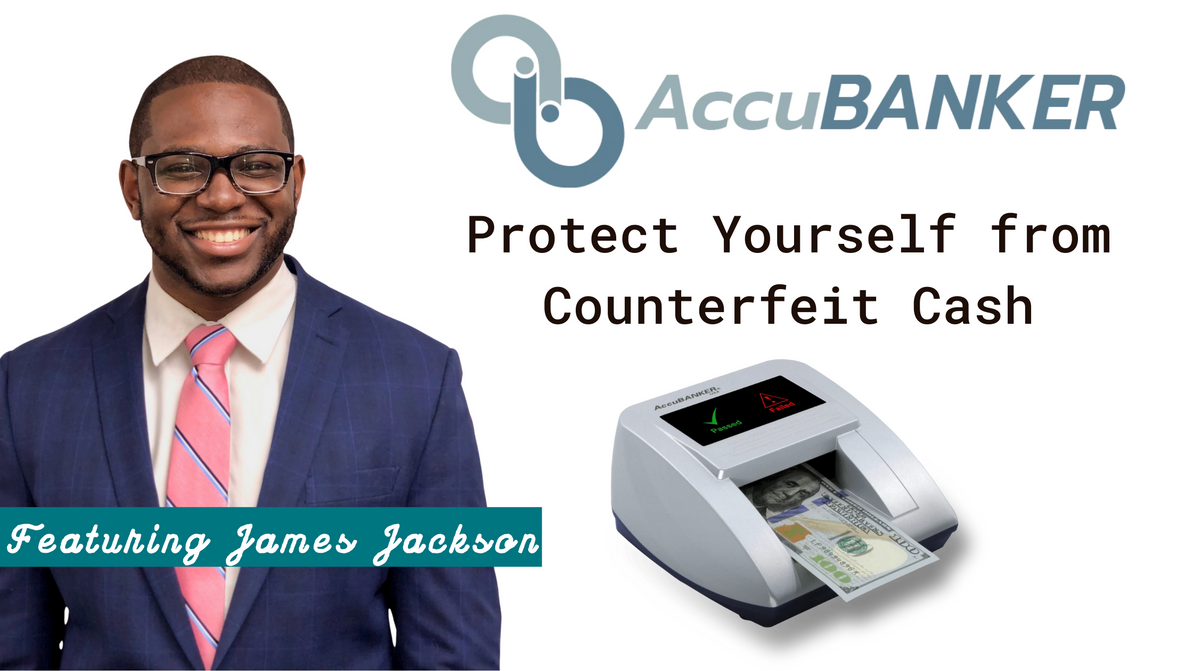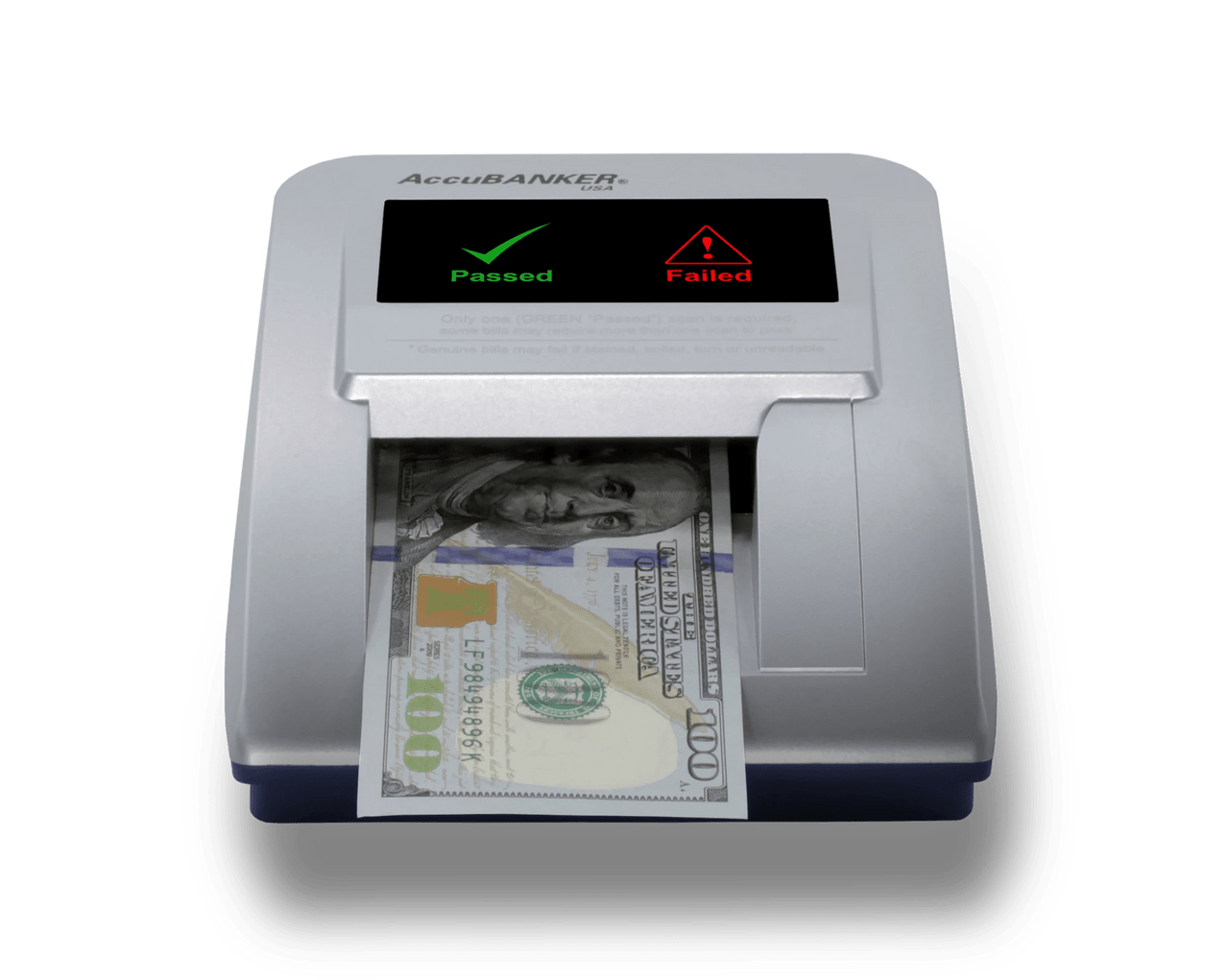The Best Way to Protect Your Money from Counterfeit Cash
Counterfeiting has been around as long as currency itself and has always been a persistent issue for individuals and businesses alike. During the early 1860s, it was estimated that one-third to one-half of all US currency in circulation was counterfeit. To combat counterfeit currency, the United States Secret Service was founded in 1865 as a branch of the US Treasury Department to combat counterfeiting of US currency.
Fast-forward to today and the issue is still prevalent. There is an estimated $70 million in counterfeit bills that are in circulation today. To put that into perspective, for a company that makes a million dollars in cash per year,$35,000 on average will be counterfeit. While the Secret Service still works to intercept and stop counterfeit operations, business owners need to proactively protect themselves from being duped into accepting counterfeit bills.
If you incidentally accept any counterfeit currency, you run the risk of your business being stuck with the loss since most insurance companies do not offer coverage.
Luckily, our team at Monroe Systems is here to help educate you on what you can do to protect your business. To assist, I interviewed our national rep, James Jackson. He’s our in-house counterfeit detection expert and works with US businesses to provide them with top-of-the-line solutions for their needs such as AccuBANKER and their line of products.
What is the most common method of counterfeit cash detection amongst the businesses you work with?
Counterfeit detection pens are extremely popular within businesses that accept cash transactions. The pen only requires a user to draw a line across a bill, making the process quick uneasy when compared to other alternatives. When drawing a line with a counterfeit detection pen, genuine cash will leave a yellow trace while fake bills leave a black mark. Both because of time savings and cost per unit, many businesses will opt for using counterfeit pens. This method can be a decent first step for a business to detect counterfeit bills, just not the final one. It’s great for small dollar value transactions, but isn’t reliable enough for larger sums of cash being handled at casinos, grocery stores, etc.
Will using a counterfeit detection pen keep a business safe from counterfeit bills?
Not completely. The counterfeit detection pens are only accurate for so long. Two things should be kept in mind:
- Limited life of counterfeit detection pens
- Lack of security
While the pens may appear to leave a mark on your bills well beyond 100 strikes, they are not as accurate after those first 100 strikes. Which leads us to a hard-to-answer question - how do you keep track of when a pen has been used 100times? In fast-paced environments like casinos or banks, we have yet to find an organization that counts each strike. Once a pen exceeds that 100-use threshold, the results have a much higher chance of showing a false positive or even worse, showing that a counterfeit is genuine. That isn’t something worth risking.
An even bigger problem is the verification process used by these counterfeit protection pens. The pen uses a basic process that a skilled counterfeit can easily beat. The pens use iodine to detect starch in wood-based papers. This process allows a pen to easily detect counterfeits that were made on commonly used papers because US denominations are made from a unique blend of 75% cotton 25% linen. When iodine is applied to the unique blend used by genuine US cash, there is no discoloration due to the lack of starch. However, the same effect can be accomplished by using hairspray on commonly used papers since it will create an invisible barrier between the starch and iodine from the pen. Because the pen is only checking for starch, it results in a false approval of a counterfeit note.
While using counterfeit detection pens may be a decent first line of defense, expert counterfeiters may use what is referred to as “bleached bills.” Bleaching bills is a process where counterfeiters remove the art from a genuine US bill, generally a $1- 10 bill, and print higher denominations like $20-100 bills onto the “bleached bill.” Using a counterfeit detection pen will not be effective because it is simply checking the material, which will prove to be valid.
What else can be used to protect against counterfeit bills?
Any staff who is handling money on behalf of a business can be trained on visual checks that can be performed when inspecting a bill. These visuals include things like checking bills for watermarking, security strips, color-shifting inks, and security threads. But, like the pens, skilled counterfeiters will have lots of tricks up their sleeves to escape detection. This is why organizations should invest in currency detection systems so there is an added layer of protection from counterfeiters.
Since 1912, Monroe has been providing companies across the globe with a variety of top-notch business equipment to meet their needs. Many of the businesses we work with are in retail and handle cash. As a result, we have personal experience with a number of counterfeit detection devices from our trusted partners. Of all of the devices we have received feedback on, none have performed better than the counterfeit detection devices made by AccuBANKER.
Who is AccuBANKER?
AccuBANKER has been one of the top players in cash handling solutions over the last 40+ years. Their products protect clients from falling victim to the latest counterfeiting threats while helping them improve efficiencies in their back office. Using AccuBANKER counterfeit detection products, your business will be able to confidently detect counterfeit cash faster and more accurately than a counterfeit detection pen ever could.
What makes AccuBANKER the top choice for counterfeit detection?
Security is a huge factor. Their D470 Quadscan Counterfeit Detector is a better choice for counterfeit bill detection due to speed, accuracy and price. Each bill goes through a seven-factor authentication process that takes less than a second to complete. There is no need for special training, as a user can simply insert a US bill in any orientation and these seven factors will be checked:
- Ultraviolet
- Magnetic Ink
- Infrared
- Watermark
- Size
- Image
- Color spectrum.
Users of the D470 will either see a green check mark or red “X” to indicate whether a bill is real or counterfeit. In addition to the easy-to-use functionality, AccuBANKER includes a 3-year warranty with the D470. That all means you’ll reduce your expenses tied to checking for counterfeits, reduce the amount of waste from using pens, and most importantly, gain peace of mind that your money is legitimate US currency.
I hope you found this to be an informative interview.
I’d like to thank James for his insight about counterfeit detection and thank you for reading this article. If you have any questions, I encourage you to reach out to us at 267-580-2633 Monday through Friday from 9 AM to 5 PM ET or by email at jmarsdale@monroe-systems.com.
We’d be more than happy to learn about your organization and provide you with information and product recommendations offered from the AccuBANKER line.
Recent Posts
-
From Sales Leader to Strategic Architect: The Return of Jason Marsdale
A Return Rooted In People, Purpose, and Growth Some journeys come full circle. After previously h …Dec 16, 2025 -
Monroe at DMWF 2025: How Our Team is Shaping the Future of Digital Marketing
How A Two-Day Conference Is Sparking Innovation For Monroe Systems for Business When your company …Dec 11, 2025 -
The 2026 Ultimate Guide to Buying a Printing Calculator
2026 Ultimate Guide to Printing Calculators: Expert Insights and Selection Tips Welcome to the mo …Dec 09, 2025






